How to secure your smart home from cyber threats and attacks

Your smart home makes life easier, but it also opens new doors for cybercriminals. From voice assistants and security cameras to thermostats and TVs, every connected device is a potential target.
Real-world incidents show what’s at stake: a hacked baby monitor letting a stranger speak to a child or the infamous Mirai botnet that hijacked smart devices to take down major websites across the globe. As the average home fills up with connected tech, the risks only increase.
This guide breaks down why smart homes are vulnerable, which devices pose the biggest risks, and 12 essential ways to protect your home network and smart gadgets from cyber threats.
Why smart homes are at risk
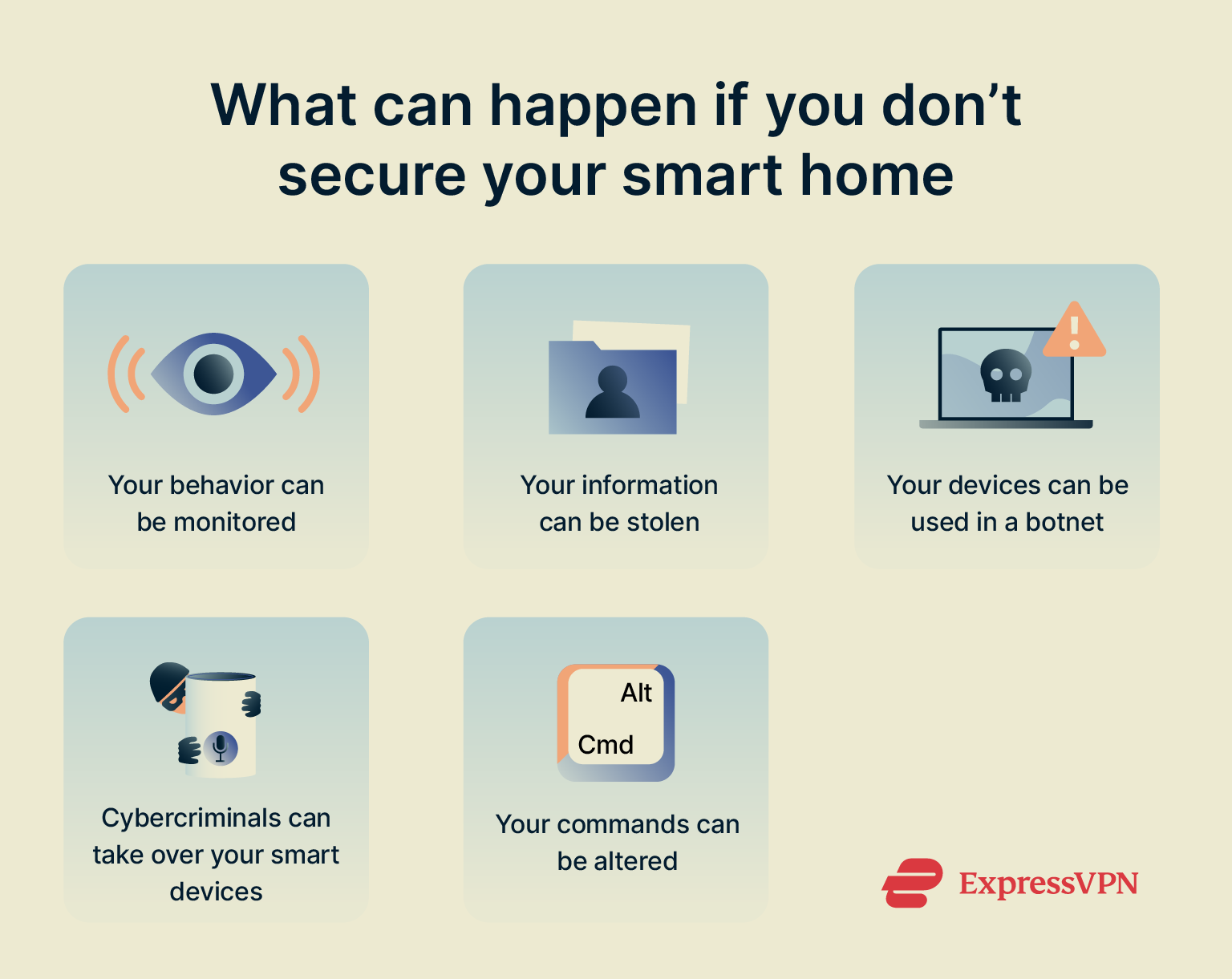 Smart home devices are part of the Internet of Things (IoT). They rely on constant connection to work smoothly, but that same connection can open the door to cyber threats.
Smart home devices are part of the Internet of Things (IoT). They rely on constant connection to work smoothly, but that same connection can open the door to cyber threats.
Worryingly, studies have found that more than 90% of IoT traffic isn’t encrypted, making it easier than you’d think for attackers to intercept or manipulate your data. Misconfigured devices, weak default settings, and poor privacy habits all contribute to a smart device’s vulnerability.
Essentially, if you don’t secure your smart home properly (and most people don’t), you’re at risk of privacy breaches, data theft, and even behavior-based profiling tied to the growing Internet of Behaviors.
What makes smart devices vulnerable to hackers?
Many smart home devices come with default logins like “admin” that people forget to change. Since these are easy to find online, they can give a cybercriminal a quick way in.
Weak Wi-Fi passwords or outdated router settings don’t help either, especially if your network isn’t using strong encryption. Then there’s the issue of updates; some devices rarely get them, and when they do, not everyone installs them right away. That leaves known security flaws wide open.
On top of that, some devices use insecure apps or have open ports that attackers can scan and exploit. One poorly secured gadget is often all it takes for someone to get into your home network.
What are the key threats to smart homes?
Smart homes face many of the same cybersecurity risks as computers and phones, but multiplied across every connected device. The more gadgets you have, the more entry points there are for attackers. Here are some of the key threats:
- Spying and eavesdropping: Cybercriminals have taken over cameras and voice assistants to watch or listen in and sometimes even speak through them.
- Data leaks: Some devices have exposed Wi-Fi passwords or login details, making it easier for someone to access your network.
- Botnets: Compromised devices can be used in large-scale attacks, like the Mirai botnet that disrupted major websites in 2016.
- Sabotage: Criminals have remotely cranked up thermostats, triggered alarms, or unlocked smart doors through known device vulnerabilities.
- Intercepted commands: Without encryption, signals between your phone and devices can be altered, like disabling a camera or unlocking a door.
Real-world examples of smart home attacks
It’s helpful (if a bit scary) to look at some real incidents that show how smart homes can be hacked in practice. Here are a few notable examples:
- Hacked baby monitor (2014): In Ohio, a couple woke up to a stranger’s voice coming from their baby monitor yelling, “Wake up, baby!” The cybercriminal had taken control of the camera, even moving it to watch the parents in real time. It was a disturbing reminder that anything connected to the internet, even a monitor in a child’s room, can be vulnerable.
- Nest devices hacked (2019): In Milwaukee, a couple’s Nest thermostat and camera were taken over by a cybercriminal who blasted vulgar music and turned up the heat. They had reused an old password, which may have made the account easy to access.
- Mirai botnet attack (2016): In 2016, cybercriminals used Mirai malware to take over thousands of smart devices like cameras and DVRs. They turned them into a network that overwhelmed major services, taking down sites like Twitter and Netflix for hours. It showed how weak smart device security can impact the wider internet, not just your own home.
- Smart device vulnerability (2023): A researcher discovered a flaw in a device designed to control smart home devices that let anyone view sensitive files by tweaking the URL. It could expose passwords or give control over other devices. The company quickly released a fix.
Most vulnerable smart home devices
Some smart devices are more vulnerable than others due to how they’re built or used. Here are the ones that often present higher security risks, and why.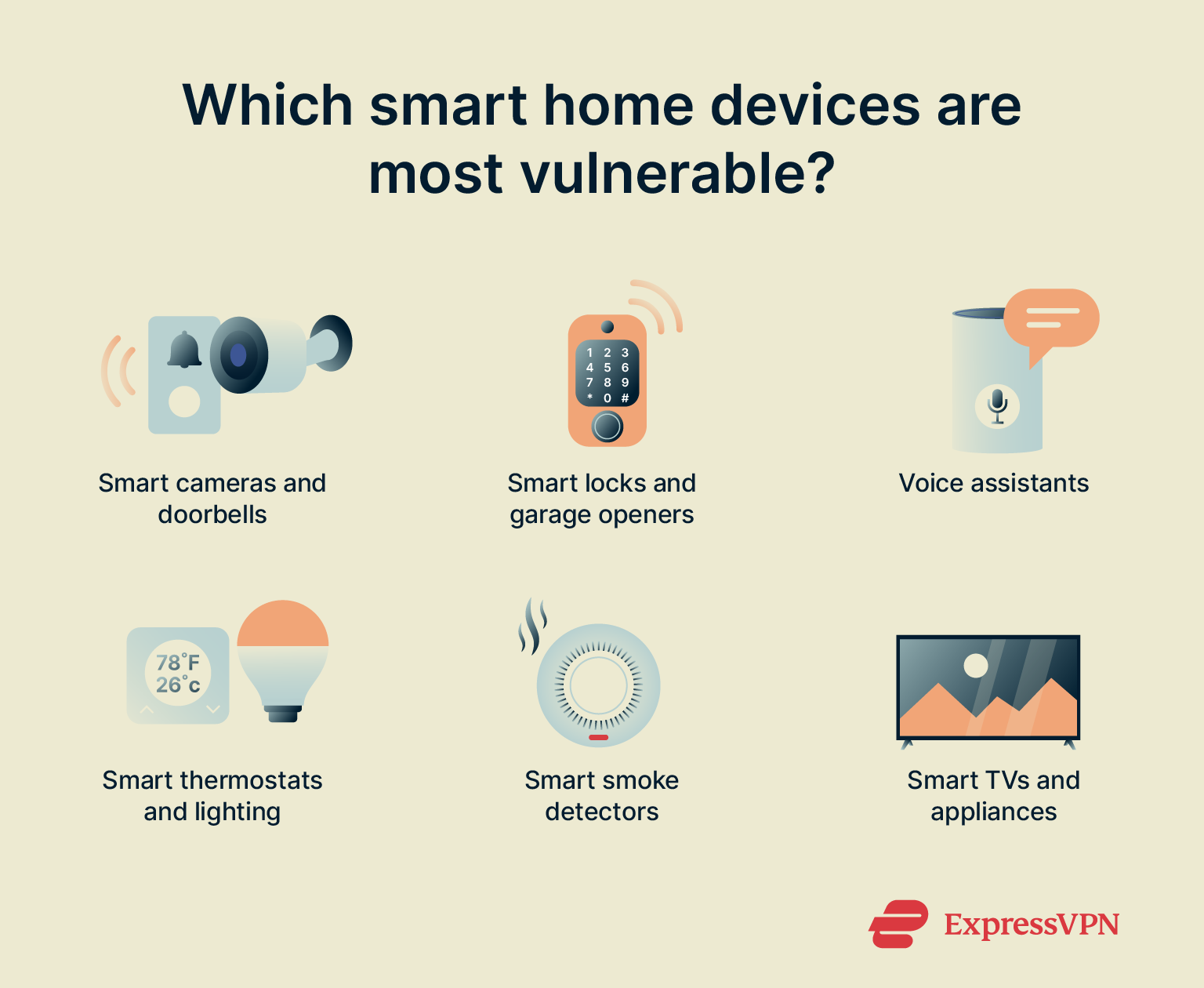
Smart cameras and doorbells
Devices like video doorbells and Wi-Fi cameras are common, but they’re also frequent targets for cybercriminals. Since they sit on the edge of your network and aren’t always well secured, someone gaining access could view your feed, steal your Wi-Fi password, or use them to reach other devices.
One review of popular doorbells found serious issues: some were sending unencrypted data to servers overseas, while others could expose your router to attack. In real-world cases, cybercriminals have taken over indoor cameras to spy on families or even speak to kids through the device.
Often, it comes down to simple things, like not changing the default password or skipping software updates. These small oversights can make it easy for someone to break in. If a camera is connected to the internet, it needs to be secured, no matter how basic it seems.
Smart locks and garage openers
These devices make life easier: you can open or check your garage door from your phone, wherever you are. Most are safe to use, especially when they have strong encryption to protect your data.
That said, they still connect to the internet, so there’s always some level of risk. Problems can happen if the device relies on cloud services that have security issues, which could affect your opener too.
To keep things secure:
- Keep the software updated: Updates often fix bugs and patch security holes, so don’t skip them.
- Protect your Wi-Fi: Use a strong password for your network and consider a VPN for extra privacy.
Getting hacked is unlikely and would take some serious effort, but it’s still smart to take precautions. A few simple steps go a long way in keeping your garage and your home more secure.
Smart speakers and voice assistants
Voice-controlled speakers are handy for things like turning on lights or playing music, but they do come with security concerns. Because they’re always listening and connected to your network, it’s important to set them up carefully.
Change the default password, check what data they collect, and keep the software updated. If multi-factor authentication (MFA) is an option, turn it on.
It’s also smart to place them on a separate Wi-Fi network, disable features you don’t use (like remote access), and avoid keeping them in places where private conversations happen.
Smart thermostats and lighting systems
Smart thermostats and lighting systems might not seem like major security risks, but they’re connected to your network, and that’s where the danger lies.
A vulnerable thermostat can act as a gateway to more sensitive devices. In one case, researchers found flaws that allowed remote installation of malicious software, opening the door to deeper network access.
Lighting systems have their own issues; some smart bulbs have flaws that could expose your Wi-Fi. Devices on smart plugs could also be shut down remotely.
Because these devices often run quietly in the background, they’re easy to overlook. But they still need regular attention and proper security updates like any other connected device.
Smart smoke detectors
Smart smoke and carbon monoxide detectors are a big upgrade from traditional alarms. They send alerts to your phone, connect with other smart devices, and can even trigger actions, like flashing your lights during an emergency. But because they’re tied to safety, the stakes are higher if something goes wrong.
If a cybercriminal manages to get control of one, they could potentially disable it or set off false alarms. That could mean no warning during an actual fire or so many false alerts that you start to ignore them altogether.
These detectors are usually always online, so they can alert you in real time. But that constant connection also makes them a possible entry point for someone trying to get into your home network. Once inside, they might try to access other devices.
There aren’t many public cases of smoke detectors being hacked, but researchers have shown it’s possible. That’s why it’s smart to keep them updated, secure your network, and treat them like any other connected device, especially since they play such a critical role in home safety.
Smart TVs and appliances
Smart TVs and connected appliances offer convenience, but they can also create security and privacy risks if not set up properly.
Many smart TVs collect data on what you watch and how you use the device, and some include microphones or cameras that, if left unsecured, could be accessed without your knowledge.
Smart appliances like ovens or fridges may not hold sensitive data, but they still connect to your network and can become entry points if not secured. And newer smart home robots, like those equipped with cameras and sensors for navigation or surveillance, raise even more serious privacy concerns. Some, like Amazon Astro, have triggered debate about how much data they collect and where that data goes.
To reduce risks, keep software updated, use strong passwords, check privacy settings, and turn off features you don’t use. Placing these devices on a separate Wi-Fi network adds another layer of protection.
12 tips to protect your smart home devices
Keeping your smart home secure and preventing hacks doesn’t have to be complicated. Most threats can be avoided with a few simple habits and settings.
Here are 12 practical ways to reduce risks and protect your connected devices.
| Tip | Why it matters | |
| 🔒 | Use strong, unique passwords | Prevents easy access if one password is leaked or guessed |
| 📲 | Set up MFA | Adds a second step so stolen passwords alone aren’t enough |
| 🔄 | Keep firmware and apps updated | Fixes known vulnerabilities and strengthens device security |
| ✅ | Buy from reputable brands | Trusted companies usually offer better security support and frequent updates |
| 🌐 | Segment your network with guest Wi-Fi | Keeps smart devices separate from sensitive personal ones |
| 🔐 | Install a VPN on your router | Encrypts your network traffic, adding a layer of privacy for all devices |
| ✂️ | Turn off unused features | Reduces the number of ways someone could exploit your devices |
| 🔍 | Monitor your network activity | Helps detect suspicious behavior or unknown device connections early. |
| 🧱 | Use your router’s firewall | Blocks incoming threats before they reach your devices |
| 🚨 | Consider pro security systems | Offers 24/7 monitoring and fast response in case of a break-in or emergency |
| 🛑 | Disable voice assistant purchases | Prevents accidental or unauthorized orders through voice commands |
| 🏷️ | Give your devices less obvious names | Makes it harder for outsiders to identify or target specific devices |
1. Use strong, unique passwords for every device
Smart devices often come with default passwords like “admin” or “1234” that are easy for attackers to guess. One of the first things you should do is change those to something stronger. Use long, unique passwords for each device, ideally 12 characters or more, with a mix of letters, numbers, and symbols.
Don’t reuse passwords across devices or accounts. If one gets leaked, others can quickly be compromised. A password manager like ExpressVPN Keys can help you keep track of everything and generate strong logins. It’s a simple but powerful step to protect your smart home from easy break-ins.
2. Set up multi-factor authentication (MFA)
If your smart device apps offer MFA, be sure to turn it on. It adds an extra layer of protection by requiring a second step, like a code sent to your phone, when you log in. That way, even if someone gets your password, they still can’t access your account without that code.
Many smart home platforms support MFA, and enabling it only takes a few minutes. It’s one of the simplest ways to strengthen your account security.
3. Keep firmware and apps updated regularly
Keeping your smart devices up-to-date is one of the most effective ways to protect them. Manufacturers often release firmware updates to fix bugs and patch security flaws that could be exploited by attackers.
These updates might also improve performance or add features, but from a security perspective, the fixes are what matter most.
Some devices will update automatically, but others require you to check manually. It’s a good idea to review device settings every so often and make sure updates are enabled or apply them yourself if needed.
The same goes for the apps on your phone that control your devices. Staying current helps close known gaps and keeps your smart home safer.
4. Ensure smart devices come from reputable providers
Not all smart devices are built with the same level of care, especially when it comes to security. Before buying anything, it’s worth checking whether the brand has a good reputation for keeping its products updated and protected.
Well-known manufacturers are more likely to fix issues quickly, release updates regularly, and provide basic security features like password protection and encryption. On the other hand, some lesser-known brands may skip those steps to cut costs.
It’s a good idea to research before you buy. Look into whether the device has had past security problems, whether the company responds to vulnerabilities, and whether you’ll be able to change default settings like usernames and passwords. If that kind of information isn’t easy to find, it might be best to look elsewhere.
You don’t need to buy the most expensive option, but choosing a brand that takes security seriously can help you avoid bigger problems down the line.
5. Segment your network with a guest Wi-Fi
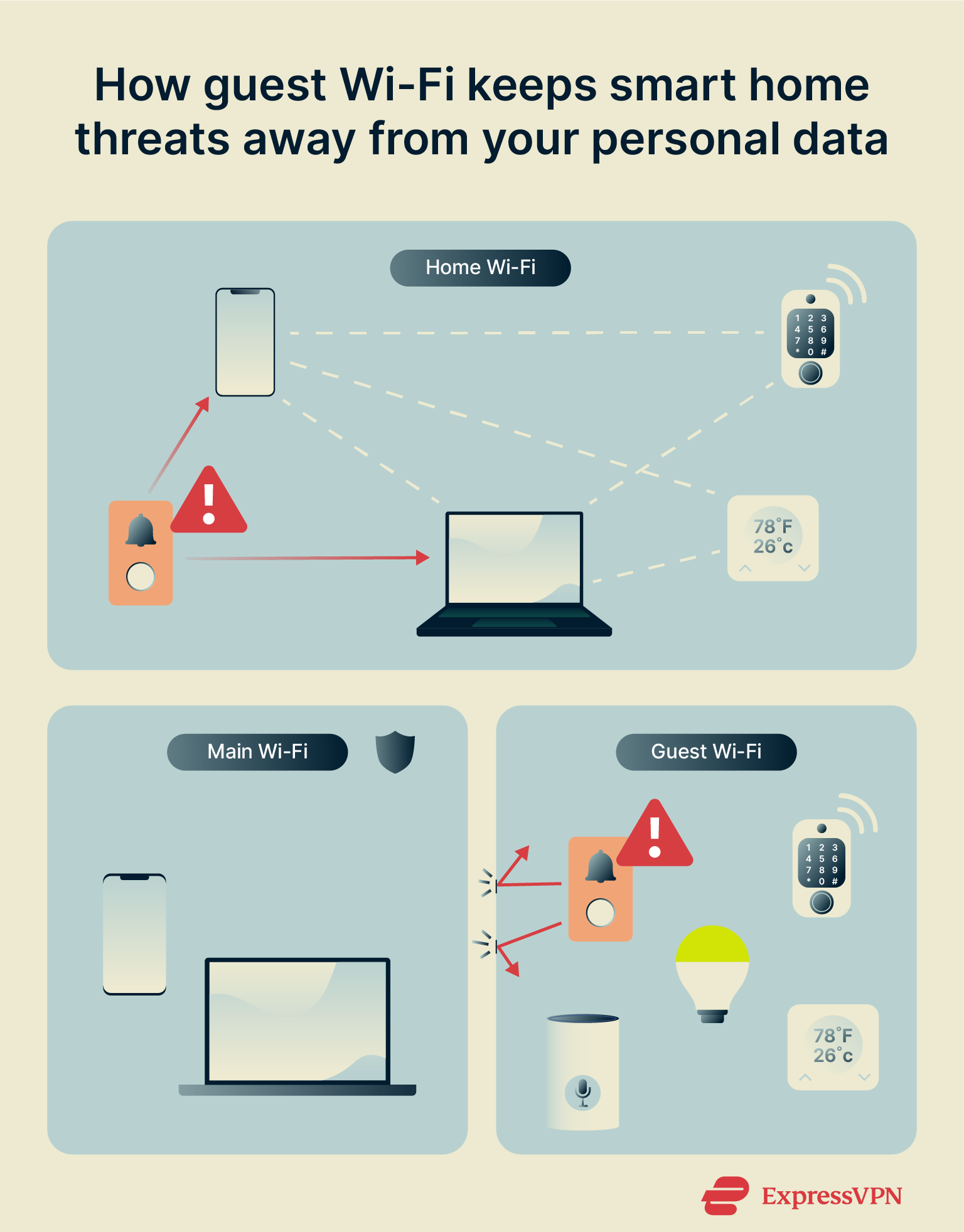 Separating your smart devices from your main ones, like your laptop or phone, is a simple way to boost your home’s security. Most modern routers let you do this by creating a guest Wi-Fi network.
Separating your smart devices from your main ones, like your laptop or phone, is a simple way to boost your home’s security. Most modern routers let you do this by creating a guest Wi-Fi network.
Here’s why it helps:
- Limits exposure: If a smart device is compromised, the threat can’t easily reach your personal devices or data.
- Creates a buffer: A guest network acts like a quarantine zone for less secure gadgets.
- Easy to set up: Many routers support multiple networks right out of the box.
For example, you could connect your lights, thermostat, and doorbell to the guest network and keep your phone and work computer on the main one. Use strong passwords and Wi-Fi Protected Access 3 (WPA3) or WPA2 encryption on both networks for added protection.
6. Install a VPN on your router
Most smart home devices don’t let you install a VPN directly on them, but that doesn’t mean you can’t protect their traffic. One effective option is setting up a VPN on your router. That way, every device connected to your home network benefits from encrypted internet traffic.
ExpressVPN offers a dedicated router app, making setup easier and giving you full control over your network’s privacy without needing to configure each device individually.
A VPN helps shield your data from outsiders by encrypting everything that moves in and out of your network. It also hides your IP address, which can make it harder for attackers to target your devices directly.
While a VPN can’t fix weak passwords or poor device settings, it adds a solid layer of privacy, especially for devices that constantly talk to cloud services.
7. Turn off unused features and remote access
Smart devices often come with more features than you actually need. Some let you control them from anywhere or connect to other apps and services, but every extra feature can also be a potential risk.
If you’re not using something, it’s a good idea to turn it off. For example, if a device offers remote access but you never use it while away from home, go into the settings and disable that option. Fewer open connections mean fewer ways for someone to try to get in.
The same goes for other unused tools like voice control, integrations, or backup services. Disabling what you don’t use helps reduce the chance of a security issue down the line. The less exposed your devices are, the safer your smart home will be.
8. Monitor your network for unusual activity
Smart device hacks aren’t always obvious. If your thermostat resets, lights turn on at odd hours, or a speaker plays unexpected audio, it could mean something’s wrong.
Another warning sign is sudden spikes in data usage or a device connecting at strange times. Most routers let you check which devices are online and how much data they’re using, and some even have apps to help.
Take a few minutes now and then to review your network. Look for unknown devices or unexpected changes. You don’t need to monitor constantly, but checking in regularly can help you catch issues early. If something seems off, disconnect the device, reset it, and update your passwords.
9. Use a firewall or advanced security gateway
Your router is the front door to your smart home. Most routers come with a built-in firewall that blocks unwanted traffic from the internet. Make sure it’s turned on; this is one of the simplest ways to keep outside threats from reaching your devices.
It’s also a good idea to turn off remote management on your router unless you really need it. That feature can give outsiders a way in if it’s not properly secured.
While the built-in firewall offers solid basic protection, some people take it a step further with routers or services that offer more advanced monitoring. Even so, just using what your router already provides can go a long way in keeping your smart home more secure.
10. Consider professional home security systems
Opting for a professionally monitored home security system offers several advantages:
- 24/7 monitoring: Professionals keep watch at all times and can respond if something goes wrong, even when you're not home.
- Fast emergency response: If an alarm goes off, trained staff assess the situation and contact emergency services if needed.
- All-around protection: These systems can detect break-ins, fires, and medical emergencies.
- Remote access and control: You can check in, get alerts, and control devices from an app.
- Peace of mind: It takes the pressure off you, knowing someone is always keeping an eye on things.
11. Disable voice assistant purchases
Some voice assistants let you place orders just by speaking. While that sounds convenient, it can easily go wrong. There have been cases where someone on TV voices a command and people’s devices actually try to make the suggested purchase. Kids have also accidentally ordered toys just by repeating something they heard.
To avoid surprises, it’s smart to turn off voice purchasing or set a code that has to be spoken before any order goes through. Most devices have a setting for this, either to disable buying by voice completely or to require a PIN.
This simple step helps prevent accidental spending and keeps strangers or curious guests from triggering purchases. If you don’t use voice shopping, turning it off entirely is the safest move.
12. Rename devices to obscure their function
When naming your smart devices, skip labels like “Front Door Lock” or “Living Room Camera.” Instead, use something less obvious, like “Device 7” or a code that only you recognize.
If someone gets limited access to your network, generic names make it harder to figure out what each device does or where it’s located. It won’t stop a targeted attack, but it can slow down attempts to pick out valuable targets.
It’s a simple step that adds another layer of protection alongside your other security measures.
FAQ: How to secure your smart home from cyber threats
Is using a VPN enough to secure smart devices?
A VPN encrypts your device traffic, which helps a lot, especially with devices that talk to the cloud. But it won’t stop someone with your Wi-Fi password or another means of accessing your account. It’s a solid layer of extra privacy, but it should be used in combination with other safety measures.
What’s the safest smart device brand?
No brand is flawless, but well-known ones tend to issue updates more often and include stronger privacy settings. Always check if the device supports password changes and firmware updates.
How can smart homes be hacked?
Cybercriminals get in through weak passwords, outdated firmware, or unsecured network settings. They can also intercept unencrypted data or exploit unused features that have been left on. Even simple oversights, like leaving remote access enabled, can give them a way in.
How can I tell if my smart home has been hacked?
Look out for weird behavior, like lights flickering, unexpected audio, or devices connecting at odd hours. Also, check for unknown devices on your Wi-Fi. Spikes in data usage or settings that change on their own can be signs, too.
How do you protect a smart home from intruders?
Start with strong passwords, two-factor authentication (2FA), and regular updates. Segment your network, disable remote access if unused, and add a VPN for extra privacy. The more layers you add, the harder it is for someone to get in.
How secure are smart homes?
They can be secure, but many devices ship with weak defaults. It all depends on setup, maintenance, and how much control you keep over your network and data. Without basic precautions, even common devices can create risks.
How to protect your home network from hackers?
Use a strong Wi-Fi password, keep your router's firewall on, and turn off remote management if you don't need it. Putting smart devices on a separate guest network also helps.
Take the first step to protect yourself online. Try ExpressVPN risk-free.
Get ExpressVPN




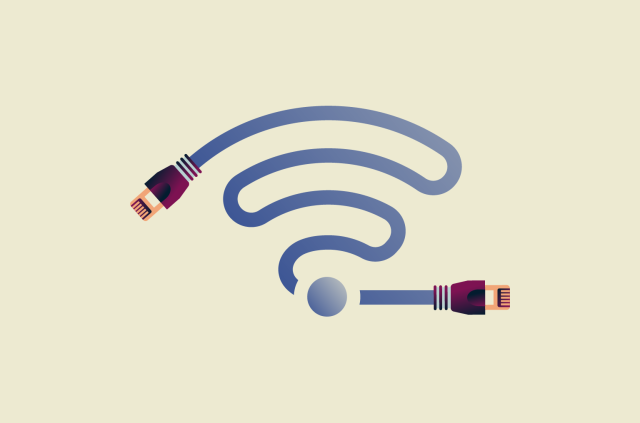


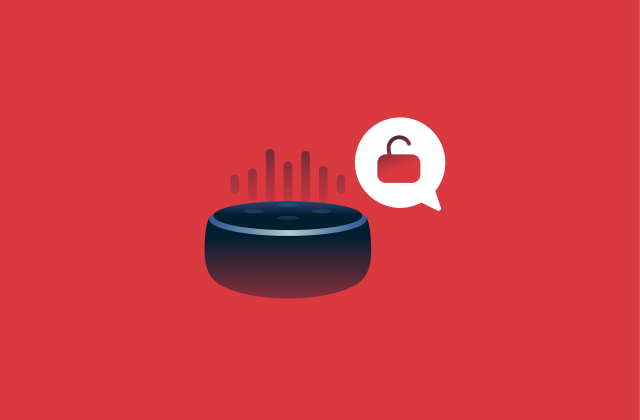
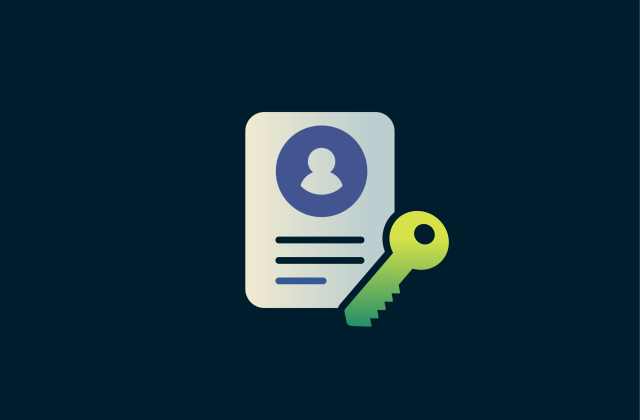
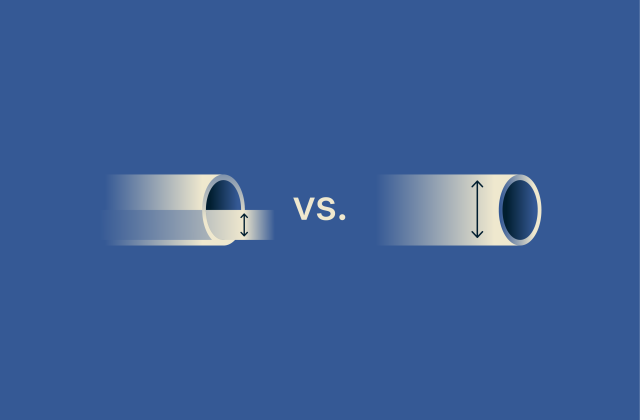
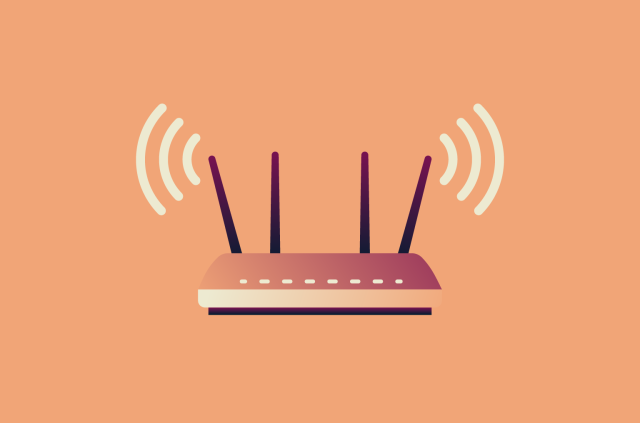

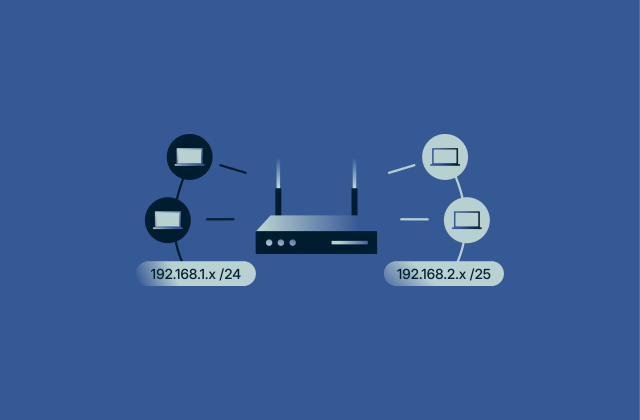




Comments
Nick, you forgot to mention the TV/home entertainment system, intercoms, microphones, radios, etc. that are able to spy on you, even when they're 'off'? As far as 'smart toilets' are concerned, well, that's one i suppose i could relate to. I was always known as a 'smart-ass'.
I see the same issues. Most of the time I just want to return to less high-security issues. I do not ever remember missing an important event just because I need to receive a phone call. My physical lock worked very well protecting my home, My bank statements never went to a crime syndicate, and I was not in fear of my life just because my phone never rang unless someone needed to speak with me. As far as I can see, our progress has been backward, with less confidence in ourselves to keep safe, and protect our assets. We have become weak with "progress". Jodi
I want to put Express VPN on two other devices and I am under the impression that I can have it on five whereas I only have it on two. Is that correct and how would I add it to the other devices?
You can install the ExpressVPN app on as many devices as you'd like, while five of those devices (under the same account) can be connected to ExpressVPN simultaneously. Refer to these tutorials to install the app on your devices: https://www.expressvpn.com/support/vpn-setup/
I have home office and all my devices https://www.expressvpn.com/ and https://www.worktime.com/ installed. Totally satisfied!
Thanks for the advice I'm having hard enough time trying to just keep one device connected
I just loved expressvpn I'm using the on in only VPN I trusted and best thing customer service available every time but on problem hope you guys fixed ping problems in in pubg game 🤗
will this stop lag switching and ddoss on my xbox one
I don’t have the smart devices listed but my daughter just got a new house that has them. I wish there was a way I could share this with her. Lol I’m sure I’ll never be rich enough for a smart toilet. I didn’t even know they existed 🤣🤣
The only problem I have is the VPN locks me out of a few websites, like Bass Pro Shops. Turn off the VPN and I get right in. Don’t understand this. Why have the thing if it impairs my ability to get to the internet? Is there some unseen threat regarding the Bass Pro Shop site? What’s the solution?
Here are some tips: https://www.expressvpn.com/support/troubleshooting/trouble-accessing-specific-websites/
Thank you ExpressVPN. Basically, before I came over to ExpressVPN I was using CyberGhost. At first, I didn't know what to expect and I thought it was fine, I mean I thought it was great and it too was far cheaper than the other VPNs. Once my 12 months was up I went to renew it THEN...I was getting all sorts of issues, our emails were flying back and forward. Don't get me wrong their customer service was amazing, extremely friendly, and helpful, then they were asking me to change my settings as it could be the settings, and I'm trying to tell them it's not my settings the issue is from your end. In the end, I left Cyber and came over to ExpressVPN and have just been blown away by the speed and performance. I find ExpressVPN superfast and more so reliable. Yes indeed, you get what you pay for.
When you know your cellphone is being used to listen in on your conversations when you are using the phone or even if it is just laying there in your presence, and your text are being read, how do you stop this? Wil a vpn on your phone help? Can the malware on the phone be detected and removed? If so, how and by who?
Playing video